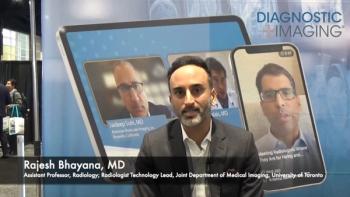
In Pediatric MRI, Gadolinium-Based Contrast Agents and Signal Intensity
Macrocyclic GBCAs in nonenhanced T1 signal intensity pediatric brain tissue.
Multiple administration of macrocyclic gadolinium-based contrast agents (GBCAs) does not result in measurable increase in signal intensity (SI) in key brain regions among children, according to a study published in
Researchers from Germany performed a retrospective study to determine whether SI in T1 sequences as a potential indicator of gadolinium deposition increases after repeated administration of GBCAs gadoteridol and gadoterate meglumine in a pediatric cohort.
Twenty-four children with brain tumors, aged 5 to 18, were included in the study. All children underwent nine or more contrast material–enhanced brain MR imaging studies. Twenty-four control patients with nonpathologic MR neuroimaging findings and no GBCA administration were also included.
The researchers measured SI on unenhanced T1-weighted MR images for five regions of interest (ROIs):
• Dentate nucleus (DN)
• Pons
• Substantia nigra (SN)
• Pulvinar thalami
• Globus pallidus (GP)
There was a mean of 14.2 GBCA administrations. No significant differences in mean SI for any ROI and no group differences were found when DN-to-pons and GP-to-pulvinar ratios were compared.
Mean signal-intensity ratios:
The researchers concluded that multiple intravenous administrations of these macrocyclic GBCAs in children were not associated with a measurable increase in SI in T1 sequences as an indicator of brain gadolinium deposition detectable by using MR imaging. However, additional imaging and pathologic studies are needed to confirm the findings.
Newsletter
Stay at the forefront of radiology with the Diagnostic Imaging newsletter, delivering the latest news, clinical insights, and imaging advancements for today’s radiologists.




























